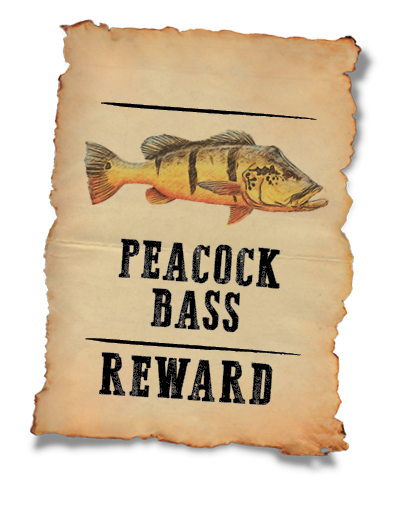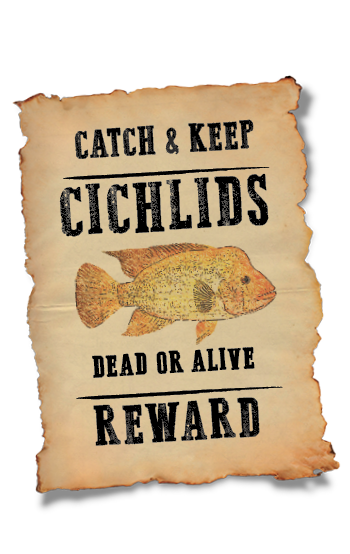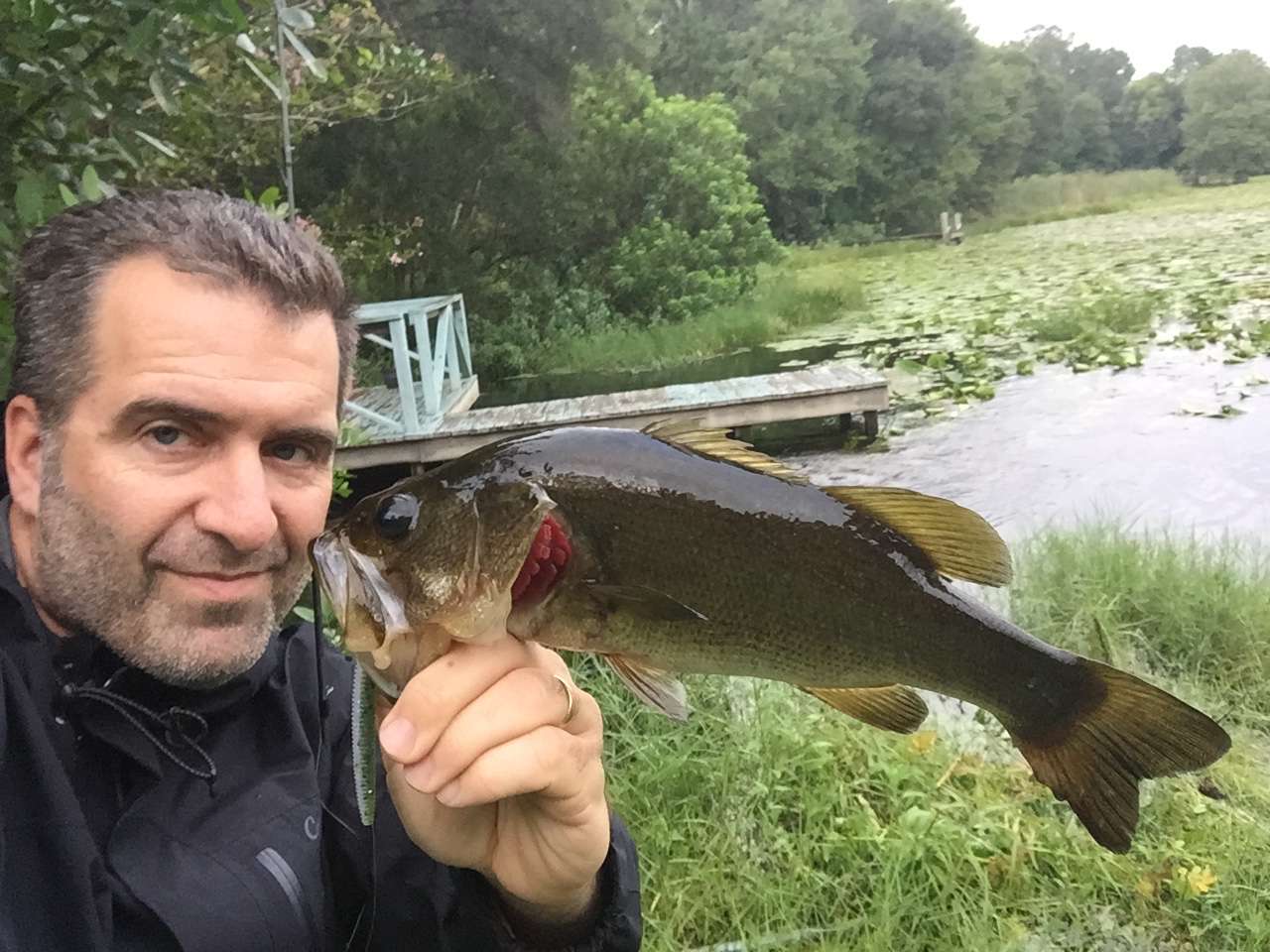
State conservation agencies are asking recreational anglers to play a major role in crucial non-native species control
Immortalized in Western lore, the afternoon of Oct. 26, 1881, found Town Marshal Virgil Earp facing an imminent threat too big to handle alone. Expanding his force, he recruited capable assistance and ultimately, ahem, lessened said threat.
Deputizing brothers Wyatt and Morgan, along with John “Doc” Holliday, the elder Earp confronted a bunch of troublemakers at the O.K. Corral in the dramatic shootout dramatized by the 1993 film Tombstone.
Similarly, Florida wants to (unofficially) involve recreational anglers with an aggressive, albeit sans firearms, effort to confront a significant ecological problem. Earp had those miscreant cowboys; the Sunshine State has a bunch of problematic out-of-towners.
If that sounds harsh, we are not besmirching the thousands of visitors upon which Florida’s tourism industry depends. Rather, the problem involves hordes of non-native fish — colloquially called “exotics” — that have invaded creeks, canals, lakes and ponds with alarmingly efficient expansion and undeniable environmental detriments.
With homegrown largemouth bass, bluegill and crappie at risk, no one ponders the present peril like Kelly Gestring, the senior non-native fish and wildlife biologist for the Florida Fish and Wildlife Conservation Commission. In fairness, Gestring’s not necessarily channeling Virgil Earp, but he definitely appreciates any recreational fishing assistance he can get.
“Non-native fish can compete with native species for food, shelter and space, and they may carry non-native diseases or parasites,” Gestring said. “They are unpredictable in that they may behave differently in Florida than in their native range where natural checks and balances are present.”
On the upside, Florida’s exotic explosion has yielded a fascinating sport fishery. With many of these invasive fish species exhibiting aggressive, territorial natures, anglers in boats or on foot can sample a diverse tapestry of international options without leaving the U.S.
Swim-igration Problem
To fully grasp this issue-based opportunity, you have to consider both the backstory and the outlook. Here’s the condensed version.
As early as the 1950s, non-native fish species started showing up in south Florida’s inland waters. The travel manifest included hard-charging Oscars and colorful Mayan cichlids (two of the earliest arrivals), crafty bullseye snakeheads, walking catfish, brown hoplo catfish, the unmistakably odd clown knifefish and a diverse array of strikingly beautiful species like jeweled tilapia, spotted tilapia and Midas cichlids.
The majority came from South and Central America, but Africa and Asia have contributed several. Some, like the blue tilapia (Africa) and the bullseye snakehead (Pakistan, Malaysia and southern China) were originally brought in for commercial aquaculture, but accidental releases and unlawful intentional stockings followed.
“Most of the non-native fish present in Florida’s native ecosystems came from the captive animal trade through either accidental or intentional releases,” Gestring said.
“There could be direct predation on native species at all stages — eggs, young and adults, depending on the [non-native] species.
“Some of these non-natives can alter the habitat, like tilapia with their bedding activities and uprooting [of] aquatic plants. So, there’s a possibility that they could reduce the available habitat for native species.”
A few, like the brown hoplo and the blue tilapia, can survive farther north, while reports indicate transplanted Mayan cichlids setting up shop in the Tampa Bay region. However, a generally cold-sensitive nature restricts the bulk of this exotic fishery to south Florida, where the network of flood-control canals, culverts and various streams have facilitated rapid expansion.
It’s understandable. You buy an aquarium, drop in some pretty fish and everything’s cool. But before long, the fish outgrow the tank and the local canal seems like the sensible option.
However, “understandable” and “lawful” do not necessarily shop at the same grocery store. The silver lining, of course, is the bounty of free groceries available to those willing to wet a line in search of table fare beyond the norm.
A lot of tilapia species rarely surpass hand size, while the clown knifefish sports a thin, bony profile that presents more cleaning table hassle than most care to endure. But a cooler full of snakeheads, larger Mayans, Oscars and blue tilapia — that’s plenty of tasty meals right there.
Wide open
That’s the best part about this non-native fishery — no restrictions (for most). Catch all you want, help the state control environmental threats and take the pressure off native species. Two key exceptions involve foreign species the state has “deputized” for environmental duty.
“The [FWC] strongly encourages the public to remove most non-native fish from Florida’s native ecosystems,” Gestring said. “There are no size or bag limits, so the public can catch and humanely kill as many non-native fish as they want with the exceptions of butterfly peacock bass and triploid grass carp.
“Butterfly peacock bass are considered a gamefish and have size and bag limits [two per day, only one of which may be 17 inches or longer]. The public can fish for grass carp, but they must be released immediately.”
Of Asian origin, grass carp are stocked for aquatic weed control. Peacocks were introduced in the early 1980s as a biological control agent — essentially, to help native largemouth put the chomp on a bunch of invaders they’re genetically wired to target.

Beyond that, the state’s attitude toward non-native species is pretty clear: Whack ’em and stack ’em.
Live baiting with shiners and even juvenile cichlids tempts those clown knifefish and peacocks, while the latter’s also fond of jerkbaits, swimbaits and topwaters. Speaking of surface action, working a hollow-body frog across matted weeds or lily pads is a good way to find snakeheads.
Now, targeting non-natives has become commonplace, but the state’s southern reaches also amplify traditional Florida fishing with highlight-reel bycatch. Traveling bass tournament anglers often find hostile Mayans fond of reaction baits meant for Lake Okeechobee largemouth. Peacocks and largemouth don’t often overlap, but where small waters condense the playing field, the former can pack an arm-stretching surprise.
For a mixed bag of Oscars, Mayans and various other cichlids, medium spinning tackle with 10-pound braided line and 8- to 10-pound fluorocarbon leaders will handle anything you encounter. Small jigs with curly tails, swimming bodies or tiny craws hold broad appeal. But you can’t go wrong with earthworms on long-shank Aberdeen hooks with split shots and small bobbers.
On foot: Amplifying the fun, adventurous strolls along practically any south Florida canal could introduce you to a bouquet of beautiful and aggressive exotics. Think “remote,” as the easily accessed waters get hammered. Pushing through underbrush and ducking beneath tree limbs where invasive green iguanas and Argentine black and white tegus perch often rewards intrepid types with uneducated targets.
A few land-bound tips: Pack light, dress for protection (sun and bugs), remember the hydration, and pay attention to your surroundings. Fire ant mounds are common, but so are alligators and American crocodiles, none of which play nice with others.
An ongoing battle
Explaining the FWC’s outlook for exotic species, Gestring said the variables are many. Unlike the predictable patterns of native species, the invaders aren’t much for script following.
“The possibility of eradicating a non-native fish species depends a great deal on how early in the introduction the species is found and what type of habitat it is found to inhabit,” Gestring said. “When possible, the Florida Fish and Wildlife Conservation Commission will eradicate populations of high-priority non-native species and continue to manage non-native fish in the state.”
Realistically, Gestring said complete eradication is unlikely, particularly with firmly established species like Oscars and Mayan cichlids. That’s why the FWC strongly encourages recreational anglers to catch and keep — and do it all again the following weekend.
Participation is not required, but consider this perspective: Yes, the biomass of non-native fish presents a daunting challenge, but if every licensed Florida angler harvested a dozen exotics a year, it may not eliminate the invasion, but it would make one heck of a dent.
As for the “open harvest” gang of misfits, a fair question merits addressing: Are anglers absolutely required to harvest/kill any non-native fish they catch? It’s kind of a gray area, but while you’re unlikely to get ticketed for catch-and-
release fishing, Gestring makes a critical clarification.
“It is illegal to catch, transport and then release non-native fish into a new area,” he said. “We strongly promote the concept of catch-keep-and-eat as a way for anglers to take advantage of these unwanted but available resources.
“This provides some unique angling opportunities. There’s a variety of species available and we encourage that consumptive use to help control these non-native fish populations.”
Fight the good fight
Safe to say, most would prefer a state left to its natural order, free to function as it should without the upsetting impacts of non-native species. Sadly, that has not been Florida’s reality for several decades. But rather than lament the present, recreational anglers literally have the power to impact the state’s future.
Corny as it may sound, each journey begins with one step and each wall a single brick.

A few Oscars. A couple of Mayans. A snakehead or two. Something’s better than nothing, and with Florida’s non-native assortment, that something offers a ton of fun.
Regarding Florida’s fisheries, every bass, bluegill, crappie and shellcracker that successfully spawns helps brighten the outlook. Every native species allowed to feed how and when its instinct dictates weaves into the tapestry a fresh thread.
Gestring concurs: “Every non-native fish removed from Florida’s waterways is one less fish having negative impacts on Florida’s native ecosystems.”
Many have enthusiastically embraced this opportunity to defend the state’s waters from foreign invasion while filling their freezer with tasty fillets in seemingly endless supply. Others may only encounter non-natives incidentally, but even such seemingly irrelevant moments can prove meaningful.
Reporting non-native species encounters, however they occur, provides valuable intel that helps the FWC monitor the “what, where and how” of this ongoing battle. Even if you only repeat existing knowledge, data is data and, once in a while, someone drops a dime on a newly established population.
“The public is encouraged to take pictures, note the location and report non-native catches to IveGot1.org, the IveGot1 reporting app or the Invasive Species Hotline [888-Ive-Got1],” Gestring said. “These reports are important for helping biologists manage non-native species.”
In Florida and everywhere native species face invasive encroachment, this is a battle worth fighting.
Even when victory seems unattainable, you just have to hold the line. For recreational anglers, that means a line tight with another invasive species bound for the dinner plate.





